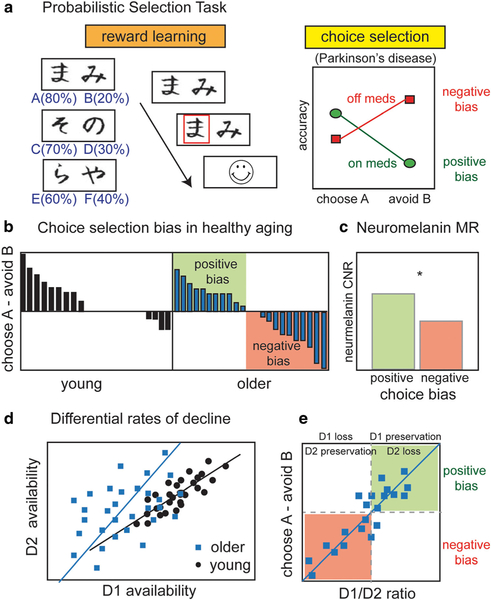Fig. 2.
Interindividual variability and the probabilistic selection task. Data displayed in panels C-E are hypothetical and are presented to illustrate predictions. a The probabilistic selection task (PST) is composed of a probabilistic reward learning phase and a choice selection phase. Studies in Parkinson’s patients suggest hypodopaminergic function biases choice selection towards actions that reduce punishment (i.e., negative bias; adapted from Frank et al., 2004). Pharmacologically restoring dopamine shifts bias towards actions that maximize reward (i.e. positive bias). b Studies in healthy aging reveal greater interindividual variability in choice biases in aging (adapted from Simon et al., 2010). c Subgroups of older adults with positive choice bias versus negative choice bias may have underlying differences in the integrity of the dopamine system that can be assessed with neuromelanin MR contrast-to-noise ratio in the midbrain (CNR). d Aging is associated with reduced D1 and D2/3 receptor availability. The rate of decline in receptor subtypes may vary across individual causing substantial between-subject variability in aging. Future studies should test the possibility that D1 receptors decline at faster rates than D2/3 receptors. e Choice selection bias on PST may be predicted from the relative ratio of D1 and D2/3 receptors in older adults. (Color figure online)

